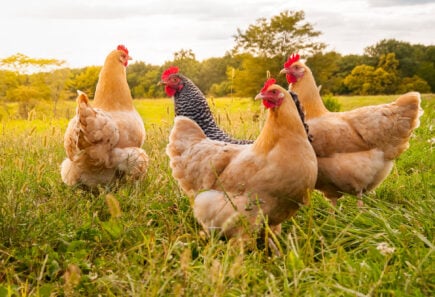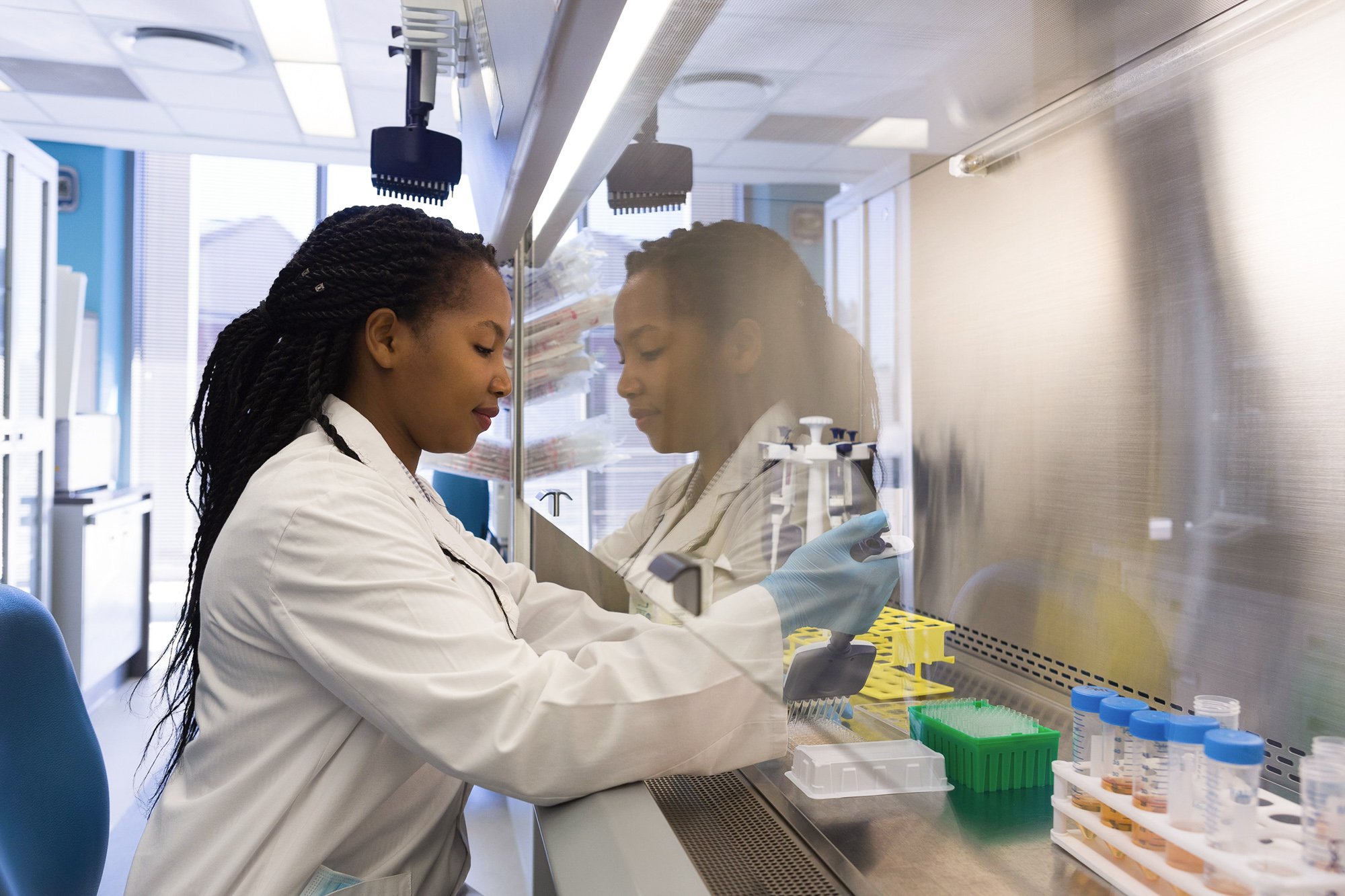Mapping animal cell metabolism to optimize media formulation
The cost and environmental impact of cultivated meat are driven by the cell culture media formulation and its conversion efficiency into meat. Metabolic modeling and engineering techniques can aid media formulation and ensure its optimal use. Targeted optimization will improve the cost-competitiveness and sustainability of cultivated meat production.
-
Cultivated
- Research
- Commercial
- Production
- R&D
- Raw Materials, Ingredients, & Inputs
- Cell line development
- Cell culture media
- Industry
- Academics
- Startups
Current challenge
Cell culture media is currently the largest cost and environmental impact driver of cultivated meat production. Life cycle and techno-economic assessments of hypothetical, scaled production of cultivated meat minimize this problem by assuming media will be used efficiently, resulting in scenarios where production could be cost-competitive and have a low environmental impact (Sinke et al, 2021; Sinke et al. 2023; Vergeer et al, 2021; Tuomisto et al, 2022; Humbird, 2021). In these studies, the cell line’s metabolism is assumed to be optimized for biomass production, and the media composition is assumed to be at least partially optimized to the metabolic requirements of each cell line, thus achieving efficient media use. These assumptions collectively result in a lower feed conversion ratio where media nutrients are efficiently converted into biomass with limited waste.
However, the majority of cultivated meat research to date has yet to demonstrate these assumptions in practice. Instead, research has centered on the basic establishment of continuous cell lines and the derivation of serum-free media. In the first phase of serum-free media development, which is already well underway, cost reduction is realized primarily through sourcing food-grade media components, replacing expensive components with more affordable versions, and scaling up the production of costly recombinant growth factors (Swartz, 2023). In the second phase of media development still to be carried out, cost reduction will be realized primarily by using lower-cost components in the most metabolically efficient way possible. This second phase of media development is expected to pose a longer-term challenge for the cultivated meat industry.
Proposed solution
Formulating media and using it efficiently is aided by a deep understanding of a cell’s metabolic requirements. One way to understand a cell’s metabolism is to create a genome-scale metabolic model (GEM), a mathematical model that can map cell metabolism, including the flux of metabolites and bottlenecks in metabolic pathways. Some organisms already have draft GEMs, but they require additional experimental validation (e.g., salmon, bovine, shrimp, chicken). Other GEMs have already been validated in many experimental settings, making them more robust (e.g., CHO cells, zebrafish). These existing GEMs can inform the creation of new GEMs, especially when organisms are closely related at the evolutionary level and share metabolic pathways and enzymes.
In general, a prerequisite for creating and leveraging GEMs includes upstream data collection such as genome sequencing and annotation, metabolomics, transcriptomics, and proteomics studies. While some of these data, such as genome annotations, already exist for species used for conventional food production, much of the other data is incomplete and will need to be created and curated for the species and cells used in cultivated meat. Another type of data critical for the metabolic engineering of cultivated meat is the biomass composition of cells at metabolic steady state, which includes careful mass measurements of all cellular macromolecules, including nucleic acids, proteins, lipids, carbohydrates, coenzymes, and species-specific metabolites.
Ensuring the accuracy of these data can result in GEMs that can predict and experimentally validate specific outcomes, such as growth rate or biomass accumulation, in tandem with downstream techniques such as flux balance analysis (FBA), metabolic flux analysis (MFA), and spent media analysis (SMA). Collectively, these techniques can inform researchers about how energy is utilized in different cells and how to best manipulate or optimize energy utilization or media composition to accomplish a given objective, such as increased biomass accumulation. GEMs have been successfully implemented in this fashion in other industries for optimizing feedstocks for a variety of end goals (Huang, 2020; Tejera, 2020).
In summary, media can be formulated and optimized for efficient use by establishing a metabolic engineering pipeline. This pipeline starts with the upstream collection of specific data to inform the creation of GEMs tailored to the species, cell types, and, eventually, specific cell lines used for cultivated meat production. GEMs can be continually refined through downstream analytical techniques such as flux balance analysis, spent media analysis, and metabolic flux analysis. Finally, robust GEMs can be adopted by researchers in academia and industry to formulate and optimize tailored media for cultivated meat production.
Anticipated impact
Publicly-available GEMs for species and cell types used in cultivated meat production can be shared amongst researchers in academia and industry aiming to improve media formulations. GEMs can be continually improved by incorporating additional -omics datasets, applying machine learning to large datasets, and iterating based on learnings from other downstream analytical techniques. Dynamic metabolic models that characterize microenvironments within bioreactors or during different cellular states (e.g., proliferation vs. differentiation) can also be built from publicly-accessible GEMs. These models will enable optimized cell culture media formulation and utilization, driving down the cost and environmental impact of cultivated meat production while the industry scales.
Related efforts
GFI resources

Reducing cell culture media cost
Learn about Dr. Burridge’s research to produce low-cost animal skeletal muscle cells at Northwestern University.
Cultivated meat growth factor volume and cost analysis
GFI and collaborators model the quantities and cost profiles of growth factors and recombinant proteins needed for a mature cultivated meat industry.

Find collaborators
Join the GFIdeas global community of 2,000+ entrepreneurs, scientists, investors, and subject matter experts. Discuss projects on the members-only Slack community, attend monthly seminars, and use the community directory to help you find collaborators working on similar Solutions!
Related solutions
-
Cultivated
Open-access formulations & optimization methods for cell culture media and growth factor cocktails
The availability of more open-access formulations will provide a foundation to enable both academic researchers and startup companies to develop their own customized formulations with far less effort and cost.
Related GFI research grants

Optimizing media for chicken cells
Learn about Dr. David Block’s work to perfect growth media for cultivated chicken at University of California, Davis.

Machine learning for fish growth media
Learn about Dr. Reza Ovissipour’s research using machine learning to optimize growth media for fish cells at Virginia Tech.

Reducing cell culture media cost
Learn about Dr. Burridge’s research to produce low-cost animal skeletal muscle cells at Northwestern University.

Explore the full solutions database
Browse 100+ startup ideas, commercial opportunities, research projects, and investment priorities throughout the alternative protein supply chain.
Get involved
If you’d like to fund a research project, work on any of these solutions, share information about related efforts that are already underway, or elevate new ideas for advancing the alternative protein industry, we’d love to hear from you!
